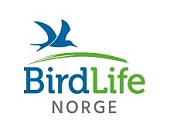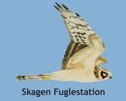
|
|
Long-tailed Tit at Lista Population monitoring at Jomfruland and Lista Bird Observatories in 2016
The full report (in Norwegian) can be downloaded: Bestandsovervåking ved Jomfruland- og Lista fuglestasjoner i 2016. By Aïda López Jomfruland and Lista bird observatories have been developing the standardized bird ringing for a period of 27 years. This report presents both long term trends and the results from 2016 for 54 species, plus some observational data. A total of 14.201 birds were caught in the standardized ringing by the two bird stations in 2016. The number of birds caught in 2016 was around normal. This is partly explained due to the high number of individual irruptive species, including Blue Tit and Long-tailed Tit as well as the high number of Goldcrests. Arrival times for the period 1990-2016 for nine common bird species divided into three different migration strategies in the standardized net catch is examined in detail in this report. Although some species arrived at record early dates to Lista in spring 2016, the typical arrival time (median date) for these species in 2016 was not particularly early compared to the median for the period 1990-2016. This demonstrates that it has a higher and more reliable value to calculate the median arrival date, instead of the first individual arrival date, in order to calculate a species arrival date. We have also chosen to look specifically at Chiffchaff and Willow Warbler on this report, which are numerous at both stations in spring and autumn, and which in addition are very similar in terms of size and behavior. At both observatories it has been ringed a total of 6.489 Chiffchaffs and 66.989 Willow Warblers. 2016 was the weakest year for Willow Warblers at Lista since the monitoring started. The number was lower than half of average numbers and spring 2016 was the first time that the Willow Warbler was ringed in lower numbers than the Chiffchaff at the bird observatory. On the other hand, the number of Chiffchaff reached the second highest numbers in spring and the highest records in autumn at Lista Bird Observatory. At Jomfruland, the spring numbers for Willow Warbler were also low, but the total ringing numbers in autumn almost reached normal amounts for this species. However, the incidence in 2016 was the weakest of the last 10 year period at Jomfruland. Although we do not know the reason for the difference between Jomfruland and Lista in the incidence of Willow Warblers in the standardized catch, we assume that breeding success in 2016 (and 2015?) may have been higher for the birds of this species that migrate through Jomfruland, and that (based on ringing data) mainly breed east or north of the watershed. The explanation for this may be that the climate has been less favorable for the Willow Warblers in Western Norway the last one or two summers, with low temperatures (in 2015) and heavy rainfall during the breeding season. Regarding the 54 bird species included in the monitoring from 1990 to 2016, there are 12 species with show increase and 10 in decline. The rest are stable, or vary considerably from year to year. | ||||||

| Ringing numbers |
|
Sorry, but we are outside of the spring and autum seasons. Detailed log |
| Reportasje fra Lista FS i Aftenposten |

|
| Seasonal deviation | ||||||||||||||||||||||||||||||
|
|
Følg Følg Lista FS på facebook.com |
| Siste 5 på siden |
|
Festivalgjester presenterer ny fuglebok Lista Fuglefestival 2025 Looking for bird ringers for spring and/or autumn 2025 Begynnerkurs i ringmerking: 26.-27. april 2025 Report from autumn 2024 |
| Nyheter fra NOF |
|
Ny taksonomi på vingene –... Klima- og miljøministeren vil... Har du funnet en måkeunge?... Tvillingartene: Hauk over hauk Hvor mange fuglearter finnes... Statsforvalteren opphever... Storskarv i Europa i... Norge må heve stemmen for... |
Lista Fuglestasjon
Fyrveien 6
NO-4563 Borhaug
post@listafuglestasjon.no Tlf: 949 86 793
 |  |


 Only in English
Only in English



